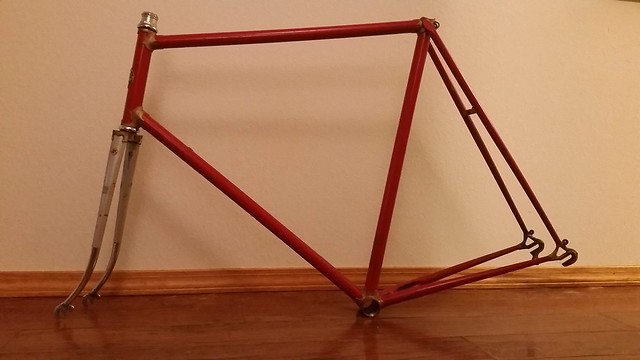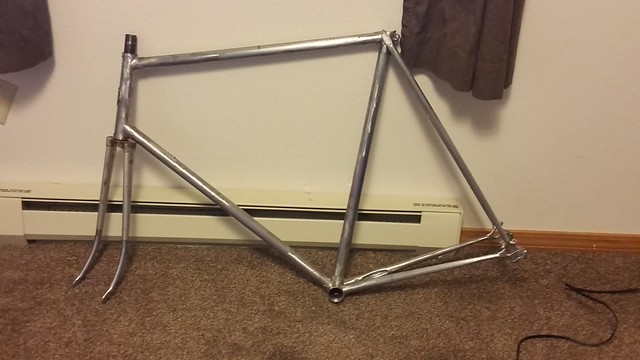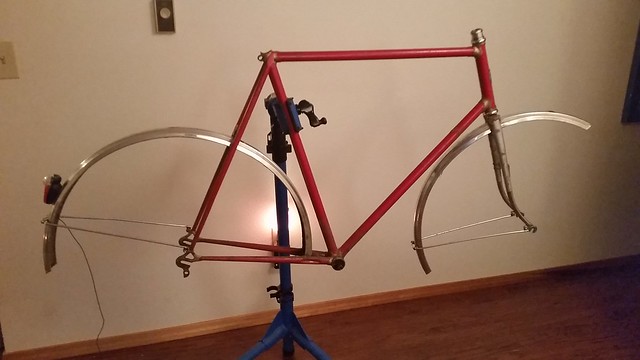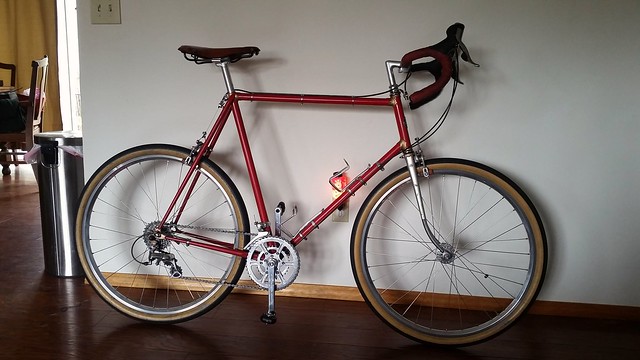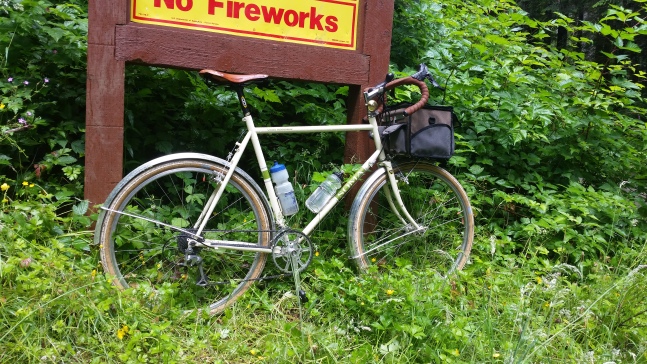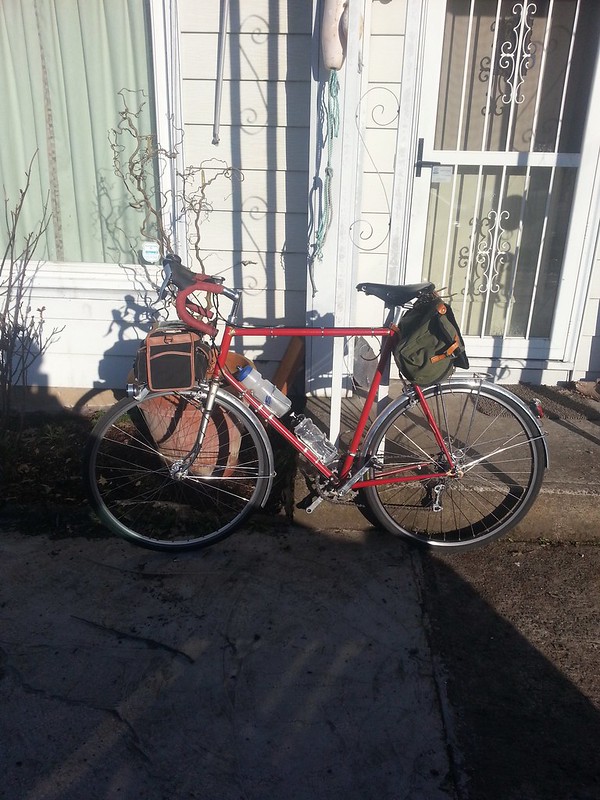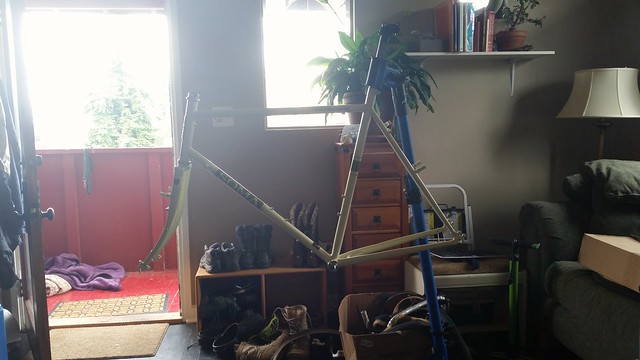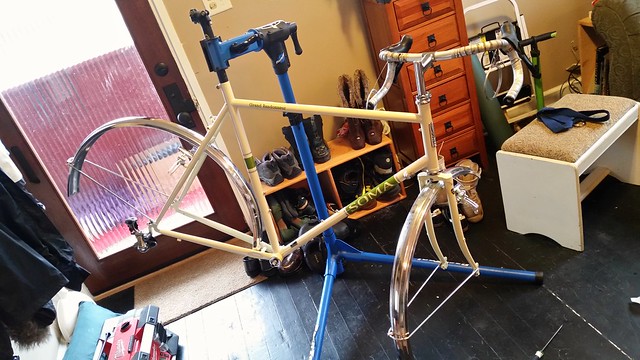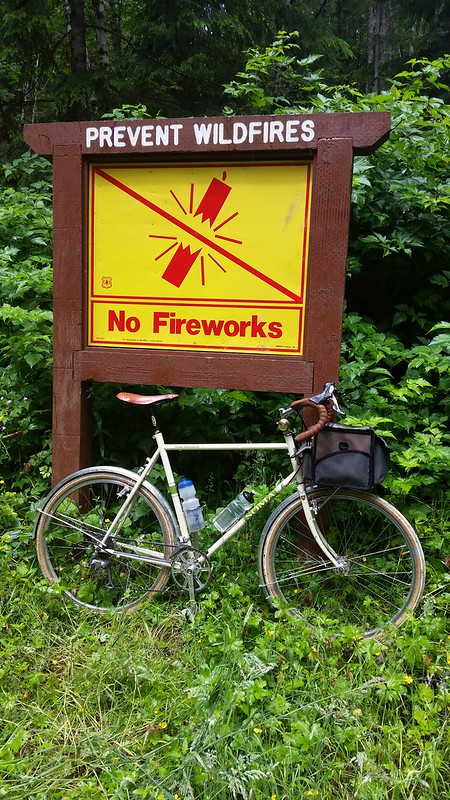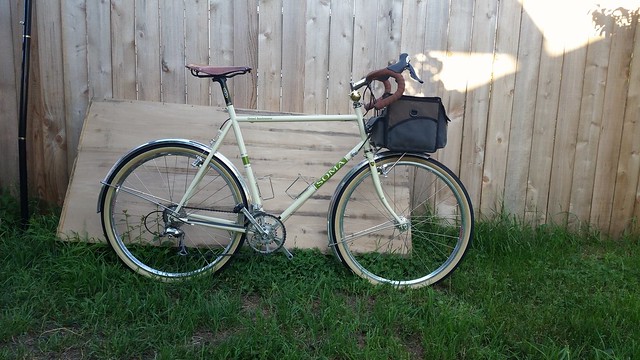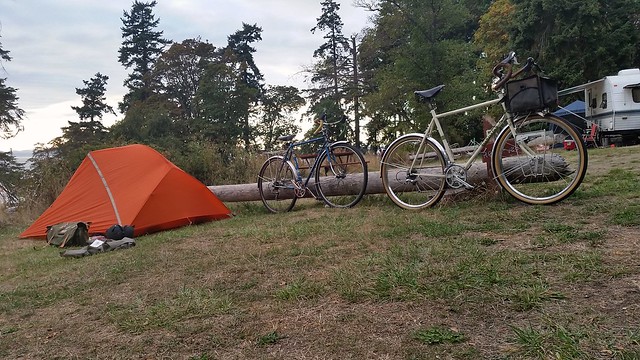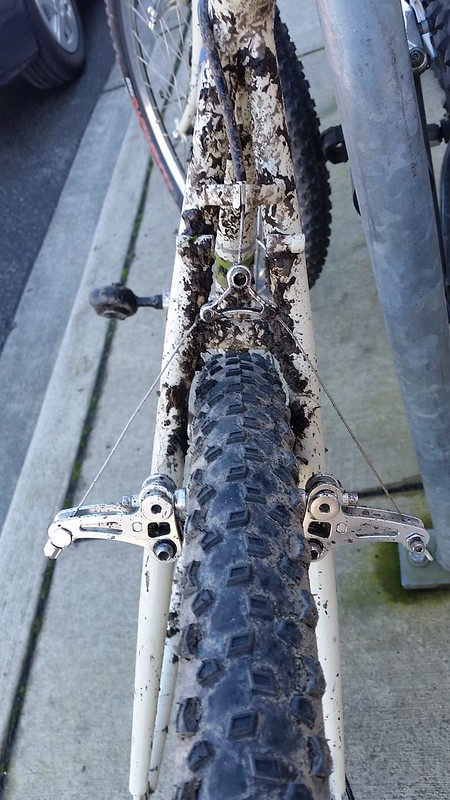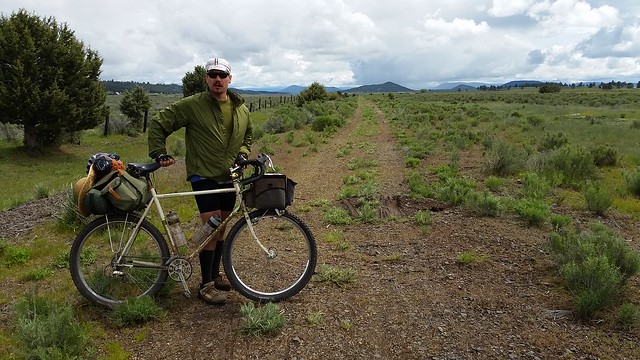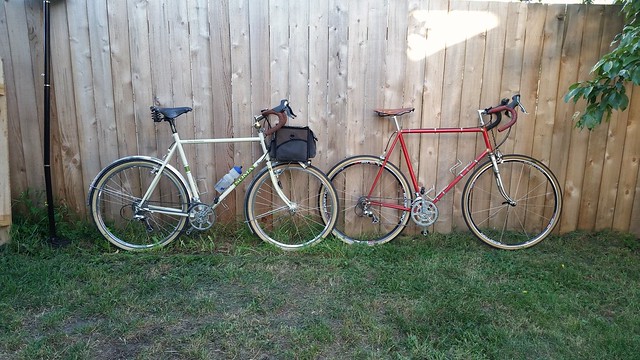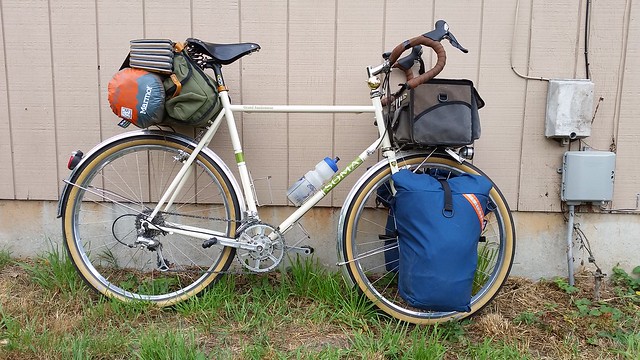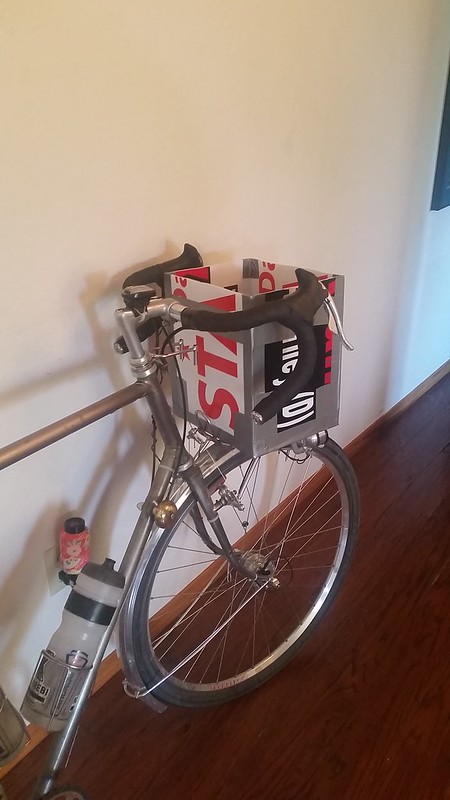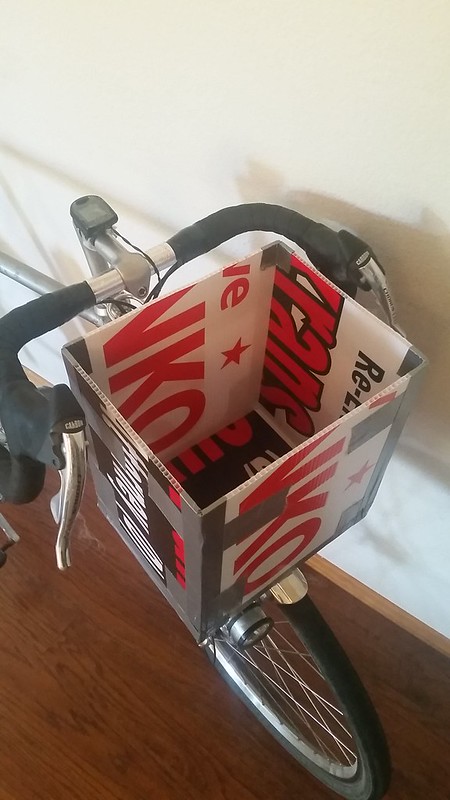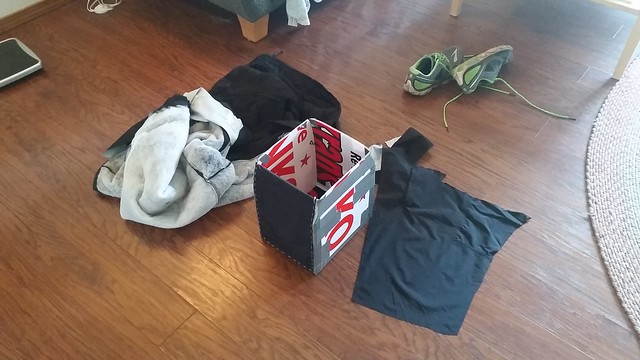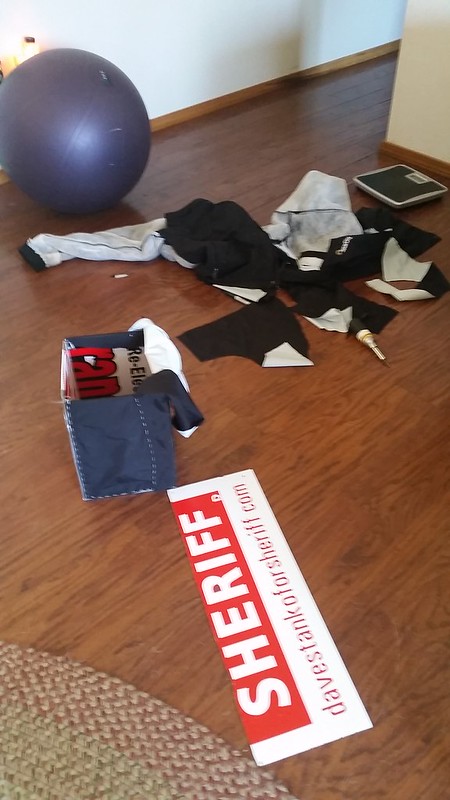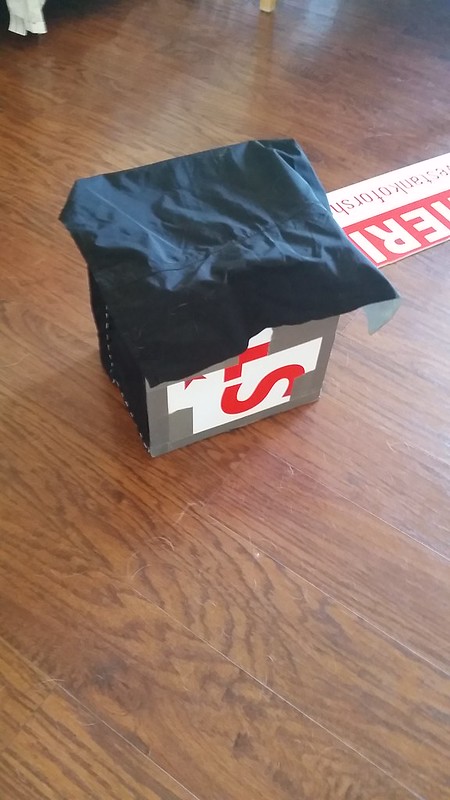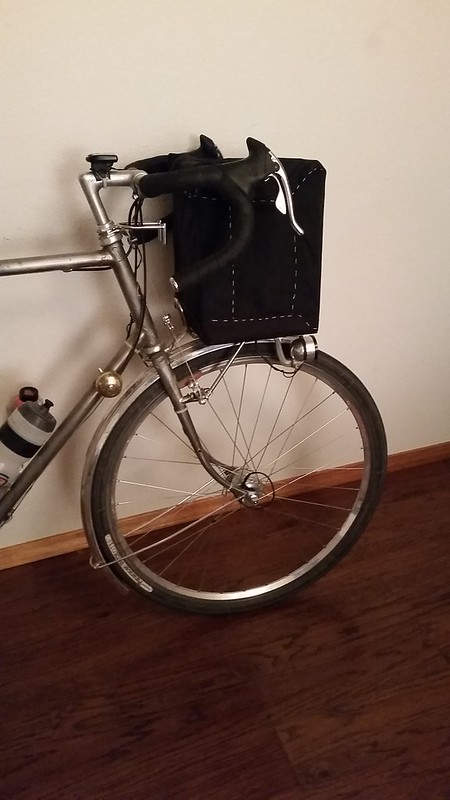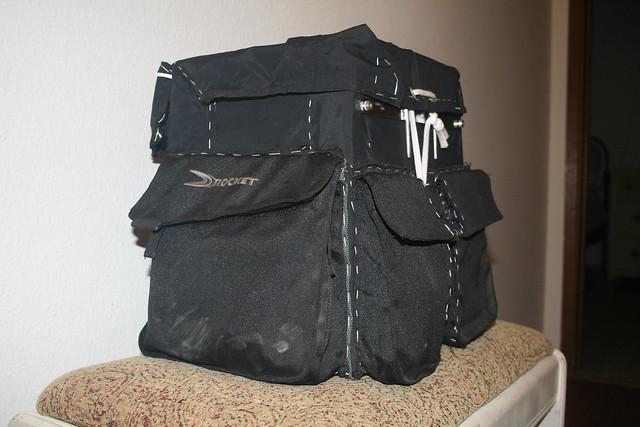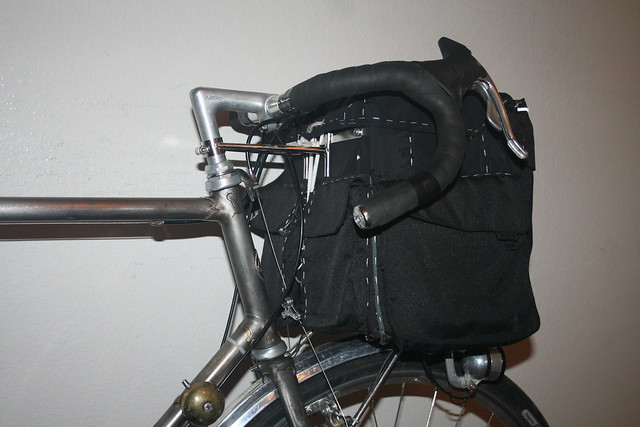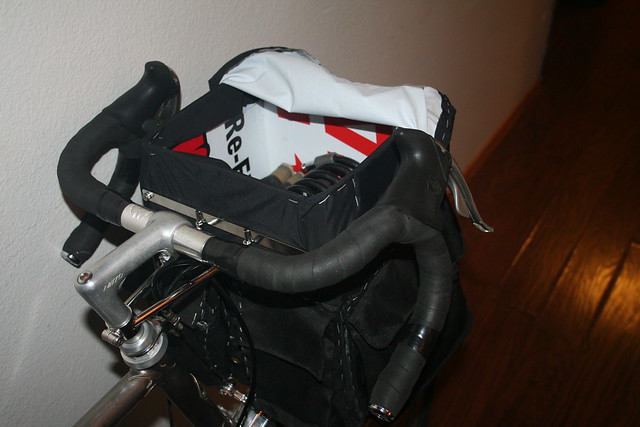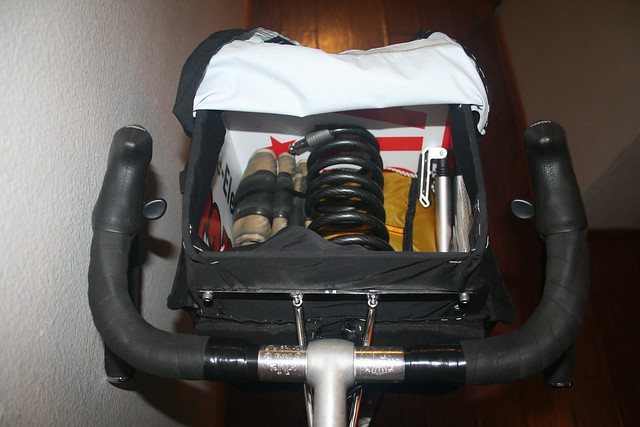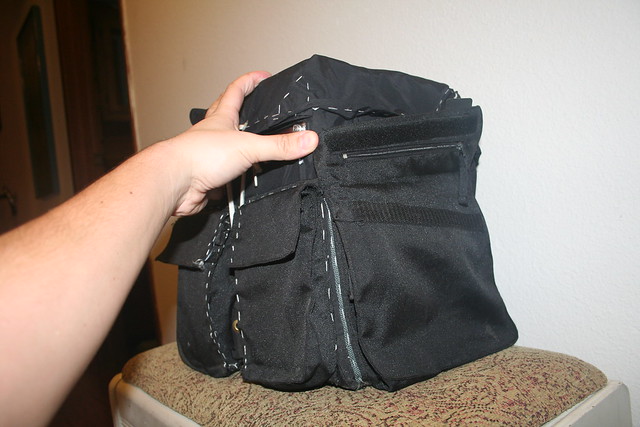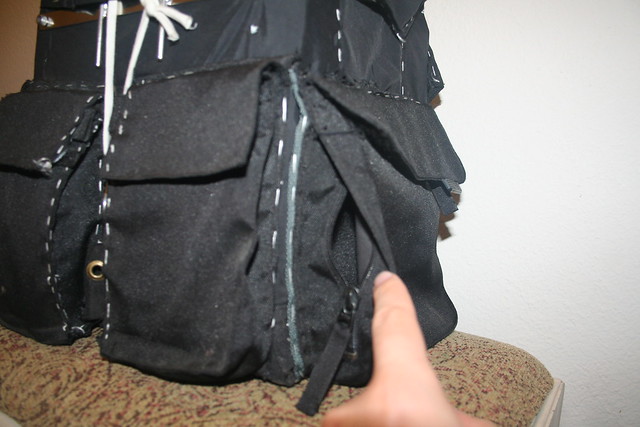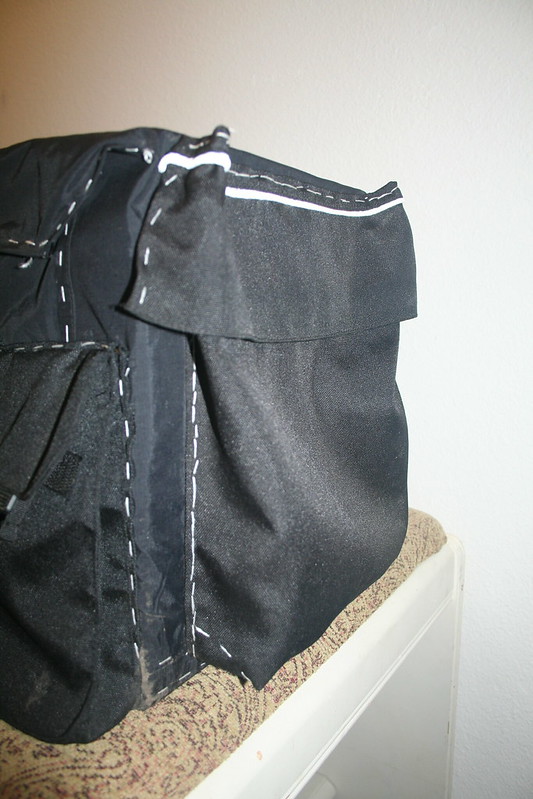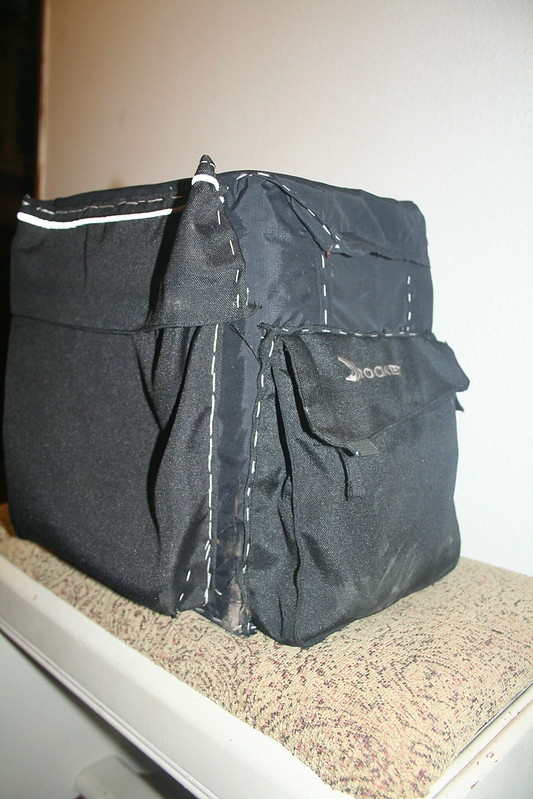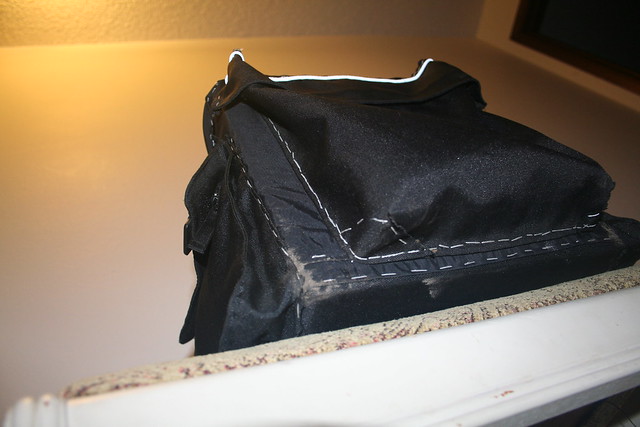
I’ve seen lovely 650b Shoguns (above), Miyatas, Treks, Peugeots, Bianchis – do a Google image search for “your favorite brand” and “650b conversion” and you’ll prolly find a pretty bike or two. There are many right answers. All are likely to offer slightly different challenges and advantages based on make, model, age and how hard a life it’s had.
Think about how you want to carry weight. If your vision is more utilitarian and less randonneur specific, consider bikes with longer chainstays. A number of older Treks fit the bill. Chainstays are measured from center of BB to the rear drops. 45cm and up means more stability and less likelihood of heel strike issues. Shorter chainstays are typically found on sportier bikes, longer on touring and townie bikes. The Motor Bacon is 425mm +/- 10mm in the horizontal dropouts, a length I’ve been led to understand is common of sporty bikes of the mid to late 70’s. I have a size 10 foot, I use 175mm crank arms, and when I tried panniers on a rear VO rack, I had intermittent heel strike. For what it’s worth.
Long stays, a rear rack, some panniers, fenders and nice fat 38mm tires can make an old steel bike a terribly useful thing. Treks, Miyatas, Fujis and more touring oriented and less fancy bikes work well for this.

Front loading bikes offer greater risk and reward than going the tried and true rear rack and pannier setup. Handlebar bags that rest on a small rack snuggled just on top of the front wheel are HOT. Don’t lie to me, don’t lie to your self. I don’t care how much electrical tape or how many zipties your decidedly unfoppish thrash monster has, Frenchie Rando bikes and their hallmark boxy bags look purdy. I rocked kitty litter panniers for a long time, I get it, I do. But front loading, if you get it right, is dreamy.

Trail talk! This trail calculator is extremely helpful. On the right side of that same page is a diagram showing how trail is calculated along with links to explain possibly unfamiliar terms.
Traditional French randonneurs have “low trail”. Low here being defined as 45mm or less of trail, generally 25mm-45mm. Search for Rene Herse or Alex Singer or Jo Routens and you’ll see lots of fork offset towards the bottom of the fork legs. The old French constructeurs favored low trail.
Low trail feels weird. Good weird or bad weird, that’s a matter of taste. Low trail makes the bike feel more stable and helps at low speeds, especially on long, steep, slow climbs. Low trail also amplifies imput from the riders hands which puts some people off. The most magical aspect of low trail is it’s ability to make 3lbs on the front of the bike feel the same as 30lbs. Handling changes little to none.
Low trail is NOT necessary. Low Trail Is NOT NECESSARY. Low trail is cool, it’s unique, it has advantages and disadvantages, but it doesn’t have to go hand in hand with 650b.
Mid trail is generally defined as 45mm – 60mm and high is 60mm and up. My Bridgestone MB-1 mountain bike has a trail number in the mid 60s and it works fine with a boxy bag, even out on the trails. Older bikes, 70’s and earlier, often have mid to high trail. Newer bikes, unless randonneur-ish, have high trail. Generally.
With a high trail bike, more weight on the front end tends to make steering heavy, unlike with low trail. It’s not horrible, its not a deal breaker, but it should be considered when planning a build. Consider perhaps a smaller front bag and a trunk bag or rear panniers when hauling. If you use a messenger bag or typically don’t lug a lot of weight around, problem solved.

Mid trail – who knows man :). Try it! Fork offset back in the 1970s and earlier tended to be greater but not so great as to be like the old French constructeurs. Some, like my Motobecane, had steepish headtube angles (74°) along with a decent bit of offset, making for trail numbers in the mid 40s. This works fine for some people, but if you want low(er) trail and don’t want to pony up for a custom bike or custom fork, look for steep head tube angles and more offset and someone willing (if you’re not) to rerake your fork.
Here is a fork reraking resource. Here is another. Be sure to read this and know that reraking also impacts headtube angle!! Thank you Mark Guglielmana for the great write up and lovely decaleur on my bike. Go easy, little tweeks. If you go too far, you run out of room at the fork crown and you also run the risk of a silly looking downward-sloping top tube. I’d say no more than ~5mm of increased offset, especially when you consider how the offset PLUS increased headtube angle can lower trail quick. But this can all help to just tweek the trail number enough to make a front load that much better and put a mid trail bike squarely into low trail territory.

I think I’ve got one last 650b conversion blog in mind at this point and that’ll be for folks who want to do some more frame modifications. Also, ask questions, comment, let me know what I’m missing and I’ll try to help.



